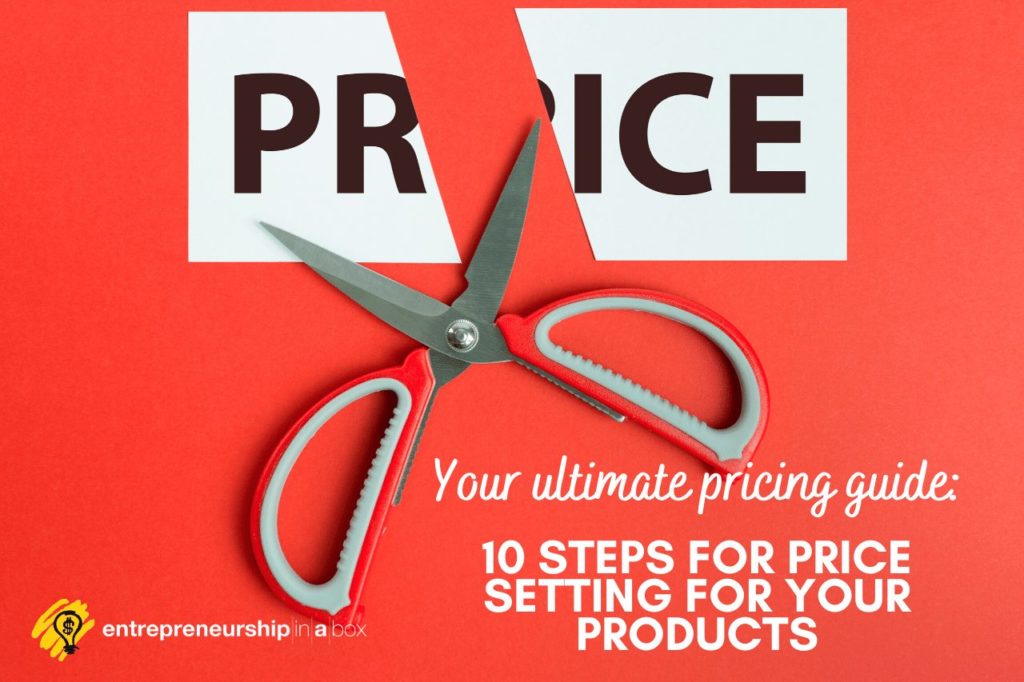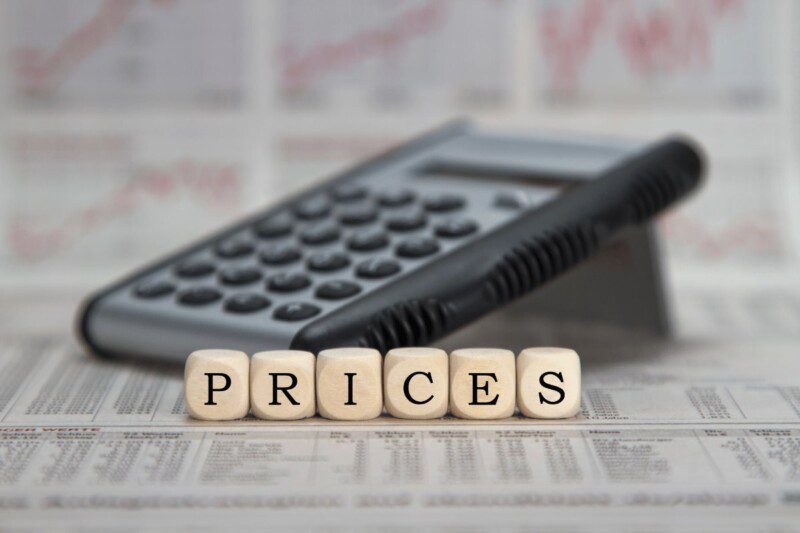Do you know how to implement price setting process that will ensure the right prices for your products and services? The price for which you will sell your products or services is one of the most important factors of your business success.
You can have a great sales process, or a large customer base, and make a big amount of income. But, still, your business does not make a profit. The biggest reason for this is the wrong price of the products or services you have set up.
Mistakes You Can Make When You Work on Price Setting for Your Products and Services
In the process of setting up prices you can make two different mistakes:
Undervalued prices of your products and services.
This mistake means that you sell your products or services with price rates that are under real market value. In such a way, you lose some amount of money as a profit for your business. You have customers and you have income, but not the right or full potential profit. So, this is a sign that you will need to make something to prevent these things happen in your company.
Overvalued prices of your products and services.
This mistake means that you sell your products and services at prices that are over real market value. In such a way, you can lose some amount of customers and your income after some period of time will start decreasing.
This is something that will not always be concluded without a detailed analysis. Sometimes you have much more added value to your products and services and you can sell them at higher rates without losing many of your customers. But, if the income starts to decrease with higher rates, there is probably something wrong with your price rates. When income decline, you can expect also declining in profit.
Related: How to Add Value to Your Products and Services
What Happen When You Don’t Set Up the Right Prices?
Let’s see what happens when you don’t set up the right prices?
For example, some products that you sell can be sold for $100.00. Your competitors sell the same type of product for $100.00. If you decide to sell that product for $90.00 and that product costs you $85.00 you will have $5.00 in profit when you sell one.
If you can sell 1000 pieces of the products your profit will be $5,000.00. However, If you sell for the same price as your competitors you will have a profit of $15,000.00.
Do you think that with the price of $100.00 you will lose some of the customers? It is possible, but you will not lose 70% of customers that will bring you the $5,000.00 in profit as with a $90.00 price. Let’s see some simulation:
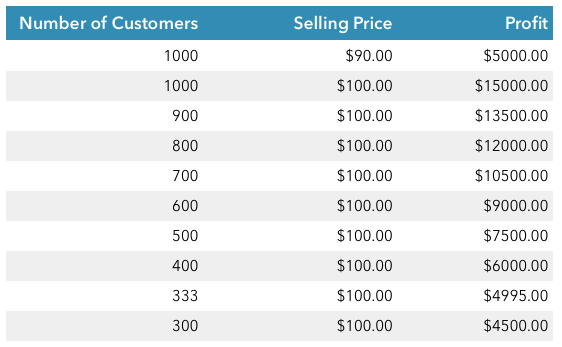
You can see that you will need to lose 667 customers to come to the previous level of profit of $5,000.00. This is 66.7% of your customers when you sell at a $90.00 price. It is a very low probability that you will lose such an amount of customers. Maybe you will lose some percentage of customers, but for sure this number will not be 67%.
Let’s do a break-even analysis on this example.
For this analysis, we will need to include fixed costs, because previously we take into considerations only variable costs or costs of goods sold (COGS).
Let’s say that we have monthly fixed costs of $5000. Your price setting process tells you to sell your products for $90. The results from the analysis will be like the one presented below.
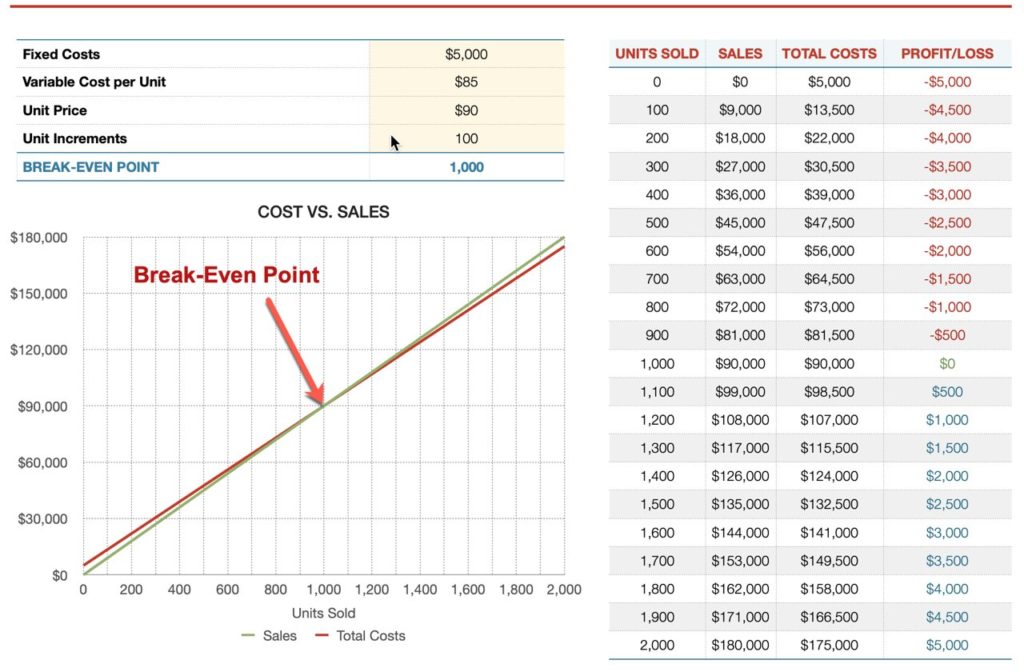
As you can see, you will need to sell more than 1000 pieces of your product or services if you want to make a profit. If you sell only 1000 pieces, you will only cover your costs, but you will not earn anything more.
Now, let’s check what will happen if our price setting process tells us to sell this product for $100.
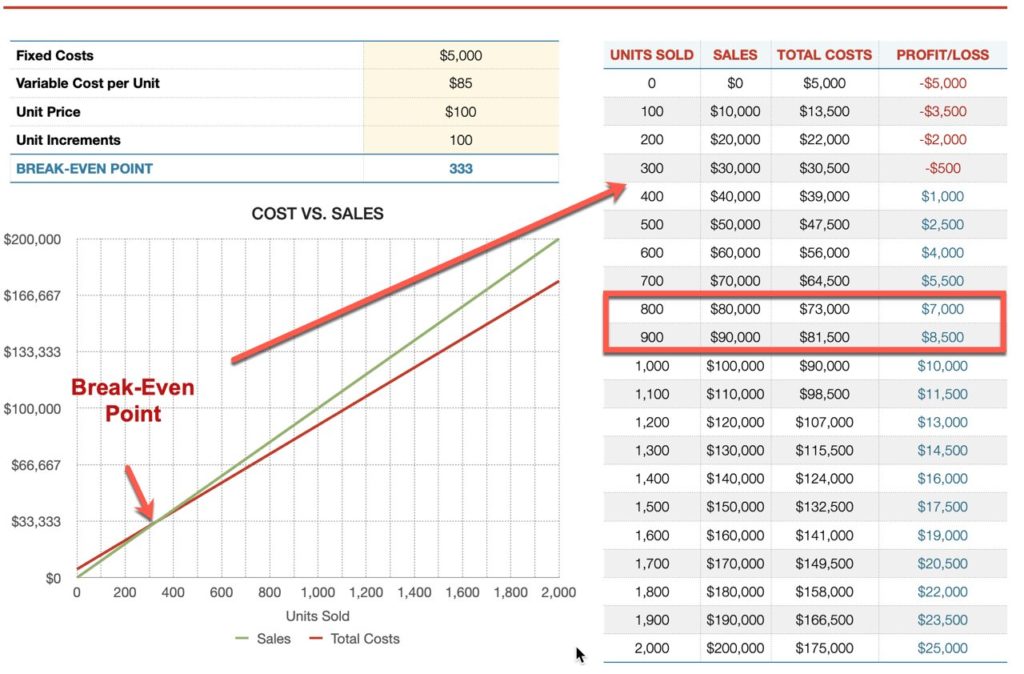
As you can see from the results, with the price rate of $100 if you sell 1000 pieces, your profit will be $10.000,00 instead of 0 when you sell these products for $90. Even if you lose 100 to 200 customers, you will still make a profit of $7.000,00 to $8.500,00.
This example shows us that only a small increase in your price rates – in this case more than 11%, will bring you much higher profitability for your company.
If you sell the product for $90.00 you will have less business potential energy because you will not utilize the full potential of profit that you can make with the real price.
First of all, your prices must ensure that you will cover all your business costs (fixed and variable costs). The second thing is that your prices will need to provide the biggest possible profit to you.
10 Steps You Can Take for Right Price Setting
Here, I want to share with you 10 steps you will need to take if you want to ensure that you use the right price setting for your products and services. The right prices are the prices that will ensure the biggest profitability for your company.
1. Know your metrics
You must know the real numbers of your business. Here I think about numbers as a cost of products, other business costs, margins, sales numbers, and so on. When you know the real numbers, you can set up the right prices that will cover the costs and will bring profit for your company. When you know these numbers, you will exactly know how much will cost you the product that will be part of the price setting process.
2. Sales forecast as a part of price setting process
You must perform a forecast for your sales numbers as the number of pieces that you can sell in the next period of time.
Let’s take an example.
The products cost you $85.00 for a piece. This cost is the cost of production or the cost of purchasing. However, you also have fixed costs of $5,000.00. If you plan to sell 1000 products then you must add $5.00 ($5,000.00/1000) to the final cost of your product. If you plan to sell 800 products then you must add $6.25 and your product will cost you $91.25. You can download our sales forecast template that can help you with these calculations.
3. Profit
In this step, you must ask yourself how much would you like to earn from your business in a specific period of time.
If you want to earn $2,000.00 at the end of each month then you must add $2.00 to the cost from the previous step if you sold 1000 pieces. Now the price will be $92.00 that will cover all of your business costs and bring you a profit of $2,000.00.
If your sales forecast is that you can sell only 800 pieces of the product then you must add $2.50 to the costs of $91.25 and the price will be $93.75.
4. Market as a part of your price setting process
In this step, you must perform market research related to the prices of the same or similar products that exist on the market. If you find that the same or similar products to yours are selling from competitors for $94.00 or higher, then your price is OK. In such a case you can choose to sell for the same price and you will make more profit.
However, sometimes you will find that your competitors are selling their products at a lower price than yours. In such a case you must perform additional steps described here.
Benchmarking is a great tool that you can use to compare your prices and your offer with competitors’ prices and offers. In such a way you can compare your own price rates with the competitors and their features and total offer.
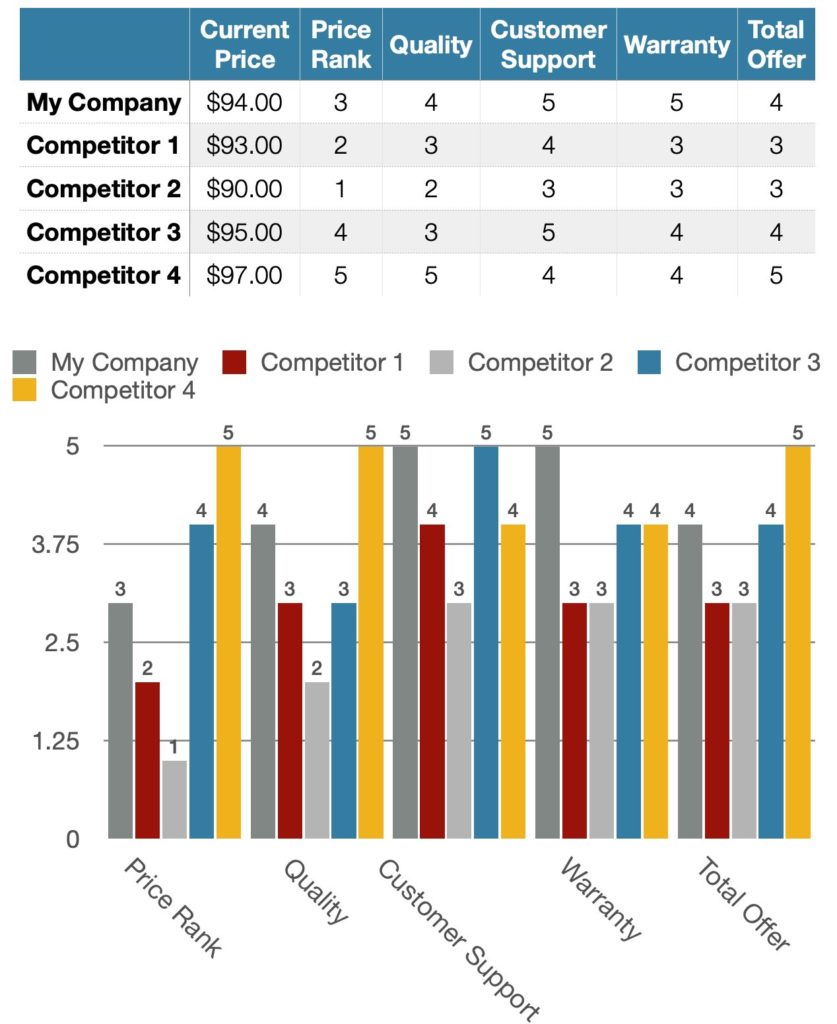
5. Check your costs for the right price setting
If the competitors are selling their products for a very low price that your metrics doesn’t allow you to sell at the same price, you must check your business costs and find possible ways to decrease them.
An additional way to ensure that you can still sell with the higher prices is to add something more to your total offer that can be easily perceived by the customers as worth spending more money.
6. Check sales forecast
Can you sell more quantity of your products? If your competitors are selling the products for low prices, and you cut all possible costs, but still you cannot use their prices, you must find ways of increasing the sales numbers of your product. By increasing the amount of the sale, your fixed cost per unit will be smaller.
7. Image.
When you finish with all the previous 6 steps it is time to think about your business image. If you succeed to build an image of prestige, you can easily increase your prices. This is one strategy that will make your products to be seen as products with better quality than the products of your competitors.
8. Services.
Add additional services to your products that will increase the value of the product to your customers. With additional services, you can charge more money for the same products and will bring a good reputation for your business.
9. Try to find ways how to increase prices for more profit
If there exist some changes to increase the prices you need to utilize that you need to check this possibility. Many times there is the fear of increasing price rates because of the possibility to lose some customers. But, fear as fear will not help you succeed in achieving your goals when it comes to profitability. You need to ensure that your price setting process will help you to get the most from your price rates.
Think about that possibility and if you can make more profit don’t give up on that possibility. You can use some techniques to do experiments like A/B testing. With this technique, you can make several price options and send them to several groups of customers.
For example, one price group can be your current prices and two additional groups will be related to the maximum increased price rate and minimum increased price rate. If there is no big difference in the percentages of customers you will lose for an additional two groups, that means you can increase your price rates. Also, if the maximal rate is something that brings higher profitability regardless of lost customers, then this is the right option for you.
As you can see, the price setting process you will need to use must cover many different factors that influence your prices and the sales numbers.
10. Start with this process again
When you finish with all previous steps you must start again with the whole process. This is a process that will never end, and if you set up the right prices and forget them when market conditions will change, you will find yourself in big trouble.
So, use this price setting process with these 10 steps more frequently. Probably you will need to go through these steps a minimum of once a year. In such a way you implement continuous improvement processes related to price setting that will ensure you will never get into trouble.

